That’s what I’m doing this week “ hanging out with 1,200 menopause doctors “ and I’m loving it!
Some of the Gennev menopause team and I are attending the North American Menopause Society (NAMS) Annual Meeting.
It’s a time of the year when certified menopause practitioners gather for continuing education on how to better help women like you through menopause.
You can read more about Gennev’s involvement in NAMS here.
I’m not a doctor, so I basically hang out in the exhibition hall for companies like Gennev, but nonetheless, I’m getting to hear what practitioners are hearing from their patients. I’m hearing what their needs are. I’m seeing the products and solutions pushed at the docs, just like they’re pushed at women”¦and like women, doctors just want clear answers, no BS.
Why are we at a conference for physicians?
We built Gennev for women. That’s always been our goal.
But we also built Gennev as a companion-solution for doctors. We’re here for them as a trusted platform. We can provide menopause health and wellness education when they don’t have enough time with patients as or they can’t get to all the email requests for questions they may receive from their patients.
Our own Chief Medical Officer, Dr Rebecca Dunsmoor-Su, says, “I don’t get to spend as much time with each of my patients as I’d like to, so Gennev is a trusted resource I can send them to without worrying they’re going to hear something I don’t agree with.”
And guess what, other doctors agree. In our first day at the conference, we’ve given away hundreds of referral cards and scanned hundreds of badges. Just as women are hungry for trusted health and wellness information and products, physicians are too.
So, that’s why we’re here. We’re promoting Gennev to ob/gyns, nurse practitioners and internal medicine doctors who attend conferences like NAMS.
If you think Gennev would be beneficial for your doctor, send them our way. They can email us at info@gennev.com and request Gennev informational materials to place in their office as an added extension of the services they offer to their patients.
It takes a village to address menopause, and our village is starting to come together.
How many of you read The New York Times article What if Menopause Wasn’t Dreaded?
It was an opinion piece on Sept 12, 2019 by University of Georgia distinguished research professor Susan Mattern.
In it, she shares a history of menopause and takes us back to a time when it was named. She writes, “The word “menopause’ itself was coined by a French physician in 1821; by then, there were colloquial expressions for it in Europe, such as “women’s hell.'”
She plants a notion in readers’ minds that society sort of created the bad energy that menopause is associated with.
In the article she states, “This bleak view of menopause is unique to modernized cultures. In cultures with minimal exposure to modernization “ few of which survive today “ the idea that the end of a woman’s reproductive years will be accompanied by a collection of unpleasant symptoms (what physicians sometimes call “menopausal syndrome’) is hard to find. Hmong immigrants to Australia, for example, when questioned by researchers in the 1990s, were surprised to learn that white Australian women thought that menopause caused physical symptoms and problems.”
How profound. If we didn’t have awareness that menopause was a bad thing, would we even think that it was when it arrived? Or dread its natural cycle in our bodies?
There’s a fair amount of you reading this article who would loudly answer my question with a definite NO.
The symptoms are real. In fact, today I heard from a woman who told me every time she gets up on stage, she gets a hot flash. Another mentioned in a quiet voice that she now knows what other women mean when they say they “can’t control their anger.”
I, for one, believe menopause is very real. But I also believe that the social picture that’s been painted since the 1800s in modern cultures has unfairly flavored its role in our lives as women.
I wish we could reverse that. I wish we could see the transition in life through menopause as a preparation for the second half of life. And if we treat it with the care it deserves, our bodies, hearts and minds will be ready to lead our families, local communities, companies and organizations with only the wisdom that time on this planet can bring.
My wish is that when women (and men) think of menopause, they consider it the moment when women are preparing to “arrive.”
“I’ve arrived and I want everyone to know it” is the bumper sticker I’d like to print for all menopausal women.
Is this too far-fetched to even wish for? I believe we can start working to make this ginormous shift. You with me?
I’m encouraged by Professor Mattern’s view on menopause, because it’s not like we’re inventing anything new. We’re just making the old cool again.
Two years ago I got acquainted with Lori McKenna, a rising singer-songwriter in the folk and country music scene. My husband, one of my best gal pals, and I bought tickets for Sundance Mountain Resort’s summer Bluebird Café Songwriter Series, where they feature the songwriters behind some of the biggest hits.
I love a good story, but I love even more knowing where it came from. When I learned the Grammy award-winning song Girl Crush was co-written by a middle-aged mother of five, I was intrigued and in love. I love unexpected people doing the unexpected.
McKenna went on to share stories of how songs come to her while carpooling kids to soccer, school, doctors’ appointments and everything in between. She writes at her dining room table. And when she needs a boost of gal-pal power, she hops a plane from her Boston suburban home for Nashville to co-write with 2 other women songwriters. All of them in their midlife, having fun and shaking up the country music scene.
Then, this past week, I was watching CBS’s Sunday Morning as yes, I watch the morning news show that’s written for my parent’s generation as and lo and behold, they did a feature of Lori McKenna. And, once again, my girl-crush on her was fueled with admiration, inspiration and a real motivation for my own pursuits. Being able to see myself in others whom I see paving a cool path in life and making it all work fuels me.
Ironically the song Girl Crush, is a sad story about the “other woman.” It’s not at all what moves me about the song. What moves me is the person who wrote the song, her life, and how she is living it to its fullest. I’ve got a different kind of girl crush that speaks to the admiration and appreciation for the women in my life that are my tribe. They get me. They listen. They challenge me, and laugh at and with me when the moment calls for it.
On this Valentine’s Day, I want to celebrate the notion of those in our lives that we have my kind of “girl crush” on. Women need women. We need friendship, emotional support, and most of all, we need trusted peeps that help us through the highs and lows of life.
Consider your girl crushes, send them a quick email, text or pick up the phone, and thank them. Tell them you love them, and honor them on this day of hearts. Doing so will bring as much warmth to you as it will to them.
Happy Galentine’s Day!
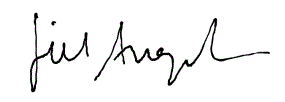
Check out the video!
Join us on the Today Show with Maria Shriver!
Gennev, women’s menopause clinic, is going to be on the Today Show!
On December 10, Gennev co-founder and CEO Jill Angelo is going to take a seat next to Maria Shriver and talk about hot flashes and wonky periods and why every woman deserves a healthy menopause journey.
Menopause isn’t a new topic for Today. They’ve recently talked about “What every woman should know“
and had our favorite neuroscientist, Dr. Lisa Mosconi, on the show to talk about the link between menopause and Alzheimer’s disease.
What’s Jill going to talk about on Today?
You. You are the modern menopausal woman, and no generation before has been like you.
In our surveys, in our online communities, and in discussions, you’ve told us some important messages that Jill will be passing on:
You want access. You want accessible, affordable care from qualified medical professionals who understand menopause, the complete range of treatments available, and how women can stay healthy well beyond the menopause transition.
You want information. Jill will talk about the thousands of you who have taken our Menopause Assessment because women today want to know where they are on the journey, how to manage the symptoms they’re experiencing, and what may lie ahead.
You want to make menopause normal. It is normal and natural, but try and start a conversation about menopause around the water cooler, right? Research, solutions, understanding as to have these, we have to be talking about menopause openly and frankly.
Ninety-four percent of you in our survey asked for help to make menopause normal, and what better way to do that than talk about our experiences on the Today Show?
We hope you’ll join Jill on the Today Show December 10. Let’s get this conversation going, because modern women have #NoTimeToPause.
Chief Medical Officer, OB/GYN Dr. Rebecca Dunsmoor-Su
explains how Gennev is helping women take control of their health in menopause
Want to know more about menopause? Sign up for our email newsletter to get expert advice, specials, and more!
There are no words that capture the weight of 2020. But what I can share after hearing from countless women throughout the year is: You. Are. Amazing!
- 1 million women consumed Gennev podcasts, webinars and articles to learn about symptoms, be supported, and get inspired.
- 100,000 of you completed the Menopause Assessment to learn about your place in the journey.
- 80,000 women joined our community to get informed, work with our menopause team of doctors and dietitians, and use products like Vitality, Magnesium and Sleep CBD to find relief for hot flashes, fatigue, sleeplessness, joint pain, and dryness.
Most of all, you did something. You took charge versus your menopause taking charge of you.
And then there is this from one of our HealthFix members, who shared it with her Gennev health coach this week…
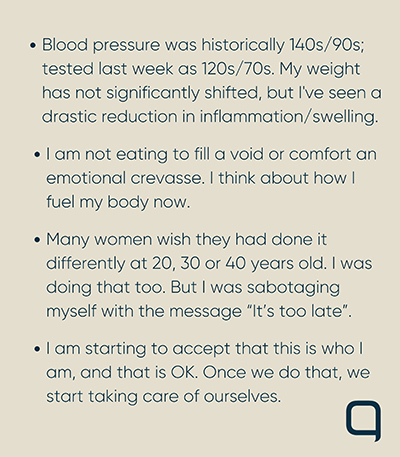
Menopause is hard, but living is in the journey.
When women commit to caring for themselves, and seeking help, they become a force that no one can hold back.
I know because I’m one of them. Like you, many members of our team are in peri/post menopause and we’re building Gennev for you from the vantage point of menopausal women”¦and we love it!
We challenge you to take care of you in the new year as however big or small that may be as you’ve got this, and we’ve got you.
Happy New Year!
Jill
Best of 2020 in Menopause
These are the 5 most read/listened to resources of the year. Enjoy!
10 Important Vitamins for Menopause Relief
Some basics of nutrition really don’t change: veggies are great, you need fat, and eating the rainbow is still a good idea. We updated our list of nutrients that are good for women in perimenopause and menopause, but the basics remain the same.
Thriving Through Menopocalypse With Amanda Thebe (podcast)
Amanda Thebe was a lifelong athlete and fitness enthusiast, but when she hit perimenopause at 43, things went … awry. Fatigue set in, and she found her previously boundless reserves of energy were drying up. And, like so many of us, she didn’t realize right away that the issues she was having were hormonal.
Supplement Savvy With Dr Wendy Ellis
We’re all looking for ways to optimize our health and especially our immunity “ things we tend to take for granted when we’re feeling good and there isn’t a pandemic going on.
Gut Health, Immunity, COVID-19, And Menopause (podcast)
One of the most unknown and underrated ways to strengthen your immune response is gut health. Science is only beginning to understand the importance of a healthy gut, including what all the gut does (a lot) and how best to protect and feed it.
Joint Pain and Menopause: Please Pass The Blueberries
Aching fingers, tight hips, sore knees “¦ joint pain is one of the most common symptoms of menopause. If you’re feeling a bit stiff and sore, especiall
The new year has arrived. And whether you consider yourself a “healthy” person or not, January represents an opportunity for new behaviors…or reestablishing old best practices.
Let’s kick off the year with the best of intentions…and actually do them! The team and I at Gennev are doing the same: smarter snacking, revitalize life fitness, dry January…and most of all, booking necessary health & wellness appointments.
Here is the 2021 healthy woman’s checklist…
To your health!
Jill
1. Create a budget
Consider what your health and wellness budget is for 2021. Are you budgeting for self-care? Do you have FSA/HSA coverage through your employer?
If you have FSA/HSA coverage, check to see what it covers in terms of health provider services and products. With a letter of medical necessity from Gennev providers, you can get coverage for appointments, supplements and lubricants on most plans. Here’s a resource for what qualifies for FSA coverage.
2. Book medical appointments
Are you in the practice of annual exams? If not, start now. Book with your physician or with a Gennev doctor.
Have you scheduled your mammogram? If you’re over 45, consider a colonoscopy if you have risk factors in your family. Whatever you do, don’t put the essentials off; talk to a women’s health specialist today.
3. Plan for necessary lifestyle change
Whether you’re in perimenopause or post-menopause, lifestyle behavior change is a must for managing weight, hot flashes, anxiety, sleep, fatigue and joint pain. We know it’s hard, so build a plan for achievable and sustainable change…even if that means baby steps.
Gennev registered dietitians/health coaches work with women of varying levels of discipline, so don’t overthink it, just start doing something. Book an appointment to build a plan for 2021. We believe this will be your best-spent $45 dollars of the year. We want you to thrive!
4. Check your supplement intake
Are you taking the right supplements for your age or stage of menopause? As women, it’s good for us to annually check-in on the supplements we’re consuming “ whether we have the right combination and whether we’re taking them at the right time of day.
If you’re not 100% confident of your routine, start by watching Gennev Director of Health Coaching Stasi Kasianchuk, RDN interview Dr Wendy Ellis about Supplement Savvy. Or – skip to speaking directly with Stasi and her team by booking an appointment with a dietitian (specify that you want a supplement audit).
5. Get the Menopause Guide
We built the Guide to Menopause from the collective expertise of our team of 25 OB/GYNs, naturopathic doctors, registered dietitians and health coaches. It’s a 60-page collection of evidence-based medical, lifestyle and herbal recommendations for every symptom of peri and post menopause. And it’s free. You can’t go wrong.
Team Gennev is lucky. We get to hear from you.
You call us to place an order. You email us your thoughts on our products. Sometimes we have the very real pleasure of talking to you in person.
You share your problems and your pain, what gives you joy and your reasons for hope. You ask us questions, and you give us answers. And every time we talk with you, we learn something new.
Join Our Menopause Group
Sometimes you share your story with the rest of the Gennev community, like when Michelle went through menopause and almost missed it, or when Anne rediscovered herself after her hysterectomy. But you have so much more to share.
So we’ve created a Facebook group, Midlife and Menopause Solutions, as a place for you to meet each other, talk, share ideas, ask for and receive the support you need.
Because we want women to feel comfortable discussing intimate topics, it is closed group, meaning only those who are approved to join can post or see others’ posts.
There are some community guidelines we ask everyone to follow so conversations stay relevant, thoughtful, and polite. You’ll find those under “description” to the right of the page.
Come in, kick off your shoes, and curl up on the couch with us. We can’t wait to hear what you have to say!
Going out for a walk is one of the easiest steps you can take to manage menopause symptoms and feel better”physically, mentally, and emotionally”right now!
When scientists at the University of Alberta looked at what happens when women start walking, they found overwhelmingly positive results. Nearly all of the 77 different walking programs that they studied showed that women felt better and were healthier after walking. Ninety one percent of the programs resulted in improvements in at least one menopause symptom or issue, such as mood, cardiovascular disease risk factors, body weight, self-esteem, and quality of life.
Nearly 7,500 midlife women participated and benefitted. Now it’s your turn to walk away from the trials of menopause and walk into the next stage of life feeling strong, vibrant, and confident.
Here are 50 more reasons to join Gennev’s Get Moving Walking Program for Women and start walking today!
- Boost your mood. In as little as 10 minutes, walking can lift you up when you’re feeling down.
- Short-circuit stress. Stress can negatively impact nearly every system in your body from headaches to stomach upset, and it can amp up menopause symptoms. Taking a walk dissipates stress and prevents its negative side effects.
- Improve sleep. Getting your steps in during the day can affect how well you sleep at night. In one study, midlife women reported sleeping better and longer on days they walked more than on days they did less.
- Tame anxiety. Within five minutes of starting to walk, your body’s anti-anxiety effects start to kick in to ease worries.
- Minimize joint pain. Walking increases synovial fluid in joints like your knees and hips which lubricates them and brings more oxygen and nutrients to the cartilage. Exercise also activates genes associated with rebuilding cartilage.
- Love how you look. After walking three times a week for four months, women ages 45 to 65 were happier with their appearance even if they didn’t lose any weight.
- Cut your risk of breast cancer. A review of research found that exercise like walking could lower your risk by 20 to 30 percent.
- Fight belly fat. Fat around your middle is associated with more health problems. But exercise seems particularly adept a targeting deep, dangerous belly fat. Women, whose exercise levels decrease during menopause, tend to have the greatest gains in their waistlines.
- Avoid a heart attack. Logging 25 minutes a day reduced the risk of dying from a heart attack or heart disease by 35 percent, according to an eight-year Harvard University study of more than 70,000 women ages 40 to 65.
- Beat fatigue. For a healthier pick-me-up, take a quick jaunt around a block or two instead of reaching for a caffeine- or sugar-boost.
- Form stronger relationships. Whether it’s with a family member, friend, acquaintance, or coworker, walking together can help you get to know each other better. There’s something about taking a walk that just gets the conversation flowing.
- Reduce your risk of diabetes. A 15-minute walk after meals improves your body’s ability to regulate blood sugar, which can help stave off the development of diabetes.
- Burn calories. The faster you walk the more calories you’ll burn, which can help you to maintain a healthy weight.
- Strengthen bones. Walking is a weight-bearing activity unlike swimming or cycling in which your body weight is supported. Weight-bearing activities stimulate your bones to help keep them strong.
- Raise cardio fitness. Aerobic exercise like walking conditions your heart and lungs so you’ll have more stamina for activities like climbing stairs and chasing after kids.
- Fight depression. Walking for 30 minutes three times a week was found to be as effective as antidepressants in one study. (But don’t stop taking any prescribed medications without checking with your doctor.)
- Short circuit cravings. A 15-minute walk can curb a sweet-tooth and chocolate cravings.
- Moderate bad genes. A daily brisk walk may inhibit a genetic tendency to be obese. Research on how behaviors like diet and exercise impact genes is just beginning, but it appears that exercise may help you beat a family history of a host of health problems.
- May ease hot flashes. In one study that followed 438 women in midlife for eight years, those who exercised daily were 49 percent less likely to report having hot flashes than those who exercised less. Women whose exercise frequency decreased during the study, experienced more hot flashes. Research isn’t conclusive, and for some it may trigger hot flashes
- Less risk of injury, than higher impact activities like running. The risk is one to five percent for walkers versus 20 to 70 percent for runners.
- Stay sharp. As you get older, your brain starts to shrink, which may contribute to memory problems. But research shows that logging five to six miles of walking a week can counter the decline.
- Connect with others. It could be your walking partner or people you see along your route. Maybe you stop to chat with a neighbor. Even a simple “hello” as you pass other walkers counts as a social connection. The more social connections people have the healthier and happier they tend to be, according to research.
- Protect your heart. Just 21 minutes of walking a day reduces your risk of heart disease by 30 percent.
- Save money. The more you replace driving with walking the less you’ll spend on gas, and maybe even car repairs.
- Clear your head. Whether you’re ruminating over a difficult work assignment, a relationship issue, or a bigger problem in your life or the world, stepping outside for a relaxing walk can be a welcome break
- Ease digestive woes. It can help with bloating and gas.
- Solve problems more easily. Walking helped people come up with twice as many creative solutions to problems compared to just sitting and stewing, according to a Stanford University study. The effect lasted even after they sat down.
- Decrease risk for colon cancer, by up to 50 percent. Not only has exercise been shown to protect against this type of cancer, it can also reduce many risk factors for colon cancer such as excess weight, insulin resistance, impaired immune function, and high triglycerides.
- Feel more satisfied. Three hours of walking a week helped midlife women feel more satisfied with their lives.
- Slow the effects of osteoarthritis. The joint pain and stiffness from arthritis can impair your functioning. But just 10 minutes of walking a day can prevent disability and keep you active.
- Rev up your immunity. Workers who walked 20 minutes, five days a week took 43 percent fewer sick days than those who walked once a week or less, during a 12-week study. If the walkers did get sick, their symptoms were milder, and they were back to work sooner.
- Enhance self-esteem. When you start walking, you start to feel better about yourself.
- Prevent weight gain. Both aging and hormonal changes during menopause have been implicated in gaining weight and fat. But exercise has been shown to slow the weight creep and, along with dietary changes, may prevent it entirely.
- Stay strong. A decline in strength has been associated with menopause, however being physically active has been found to be a strong predictor of increased strength during this transition.
- Pump up your energy. Going for a walk enhances oxygen flow in your body and triggers hormones like epinephrine and norepinephrine that boost energy levels.
- Relieve cramps. Walking improves circulation that can help relax constricted blood vessels in the uterus that result from cramping. And the feel-good endorphins it produces can block pain signals to offer relief.
- Be a good role model. Got kids or grandkids? Walking with them can help them learn to enjoy exercise and build a lifelong healthy habit.
- Remedy constipation. Walking helps to get things moving.
- Lengthen your life. You may live three years longer ensuring you get 150 minutes of brisk walking in a week. And those years will likely be better quality ones than if you’re sedentary.
- Boost good HDL cholesterol. In one study, walking an hour five times a week raised HDL levels nearly 10 percent after 24 weeks.
- Gain a new perspective. You’ll notice more and appreciate the world around you more when you’re walking instead of driving. Even reversing the direction that you walk a typical route changes what you see.
- Reduces back pain. A research review found walking to be an effective strategy for dealing with back pain.
- Preserve muscle mass. Your muscles fuel your metabolism, meaning that you burn more calories throughout the day. Unfortunately, muscle mass tends to decrease as you age, and menopause speeds up the loss. While strength training is the best way to maintain muscle, all types of exercise, including walking, may help slow the loss.
- Lower bad LDL cholesterol. Even leisurely walking has been shown to have a positive impact on this risk factor for heart disease.
- Turn down anger. Instead of lashing out, take a walk to blow off steam and avoid saying something you might regret later.
- Lower blood pressure. Research shows that walking improves blood pressure whether you have hypertension or not.
- Decrease stroke risk. Hit the recommended 150 minutes of moderate-intensity activity like walking a week, and you could cut your chances of having a stroke by 24 percent. Double it (an hour, five days a week), and you’ll slash your risk by nearly half.
- Protect the environment, if you walk instead of drive. Going 1½ miles on foot instead of in a car reduces the amount of greenhouse gases produce by about 75 percent. Cut out 10 miles of driving each week, and you’ll eliminate roughly 500 pounds of carbon dioxide a year.
- Reduce your risk of falling. Walking improves lower body strength and balance, factors the will help to keep you more stable.
- Mitigate a myriad of menopause symptoms. When researchers grouped symptoms into psychological ones (depression, irritability, anxiety), somatic ones (sweating, heart complaints, joint and muscle pain), and urogenital ones (sexual issues, urinary problems, vaginal dryness), they found that walking helped in all areas. In the study, women who started walking with other women for an hour, three times a week, reported fewer symptoms after four months than women who didn’t walk.
Join Us and Get Moving
Join the Get Moving Walking Program for Women to receive two 30-day walking programs designed by women for women, support from certified fitness instructors and health coaches, special offers and incentives.
Be part of our Get Moving Walking Community for Women for daily motivation to keep moving, share your walking experiences, receive encouragement, and have the support of other women.
Always check with your physician before beginning any new exercise program.
“Are you using your butt?”
Menopause coincides with (or contributes to) an uptick in lower back pain and joint pains are common in menopause, and many women find their knees are causing quite a bit of trouble at this time.
At Gennev, we’ve heard from a lot of women that knee pain makes it tough to be motivated to exercise. Since exercise is really important for helping of , heart disease, and dementia; since it helps us control weight as well as endorphins and alleviate menopause depression; since it helps us sleep “¦ well, not being able to move just isn’t an option.
So we turned to our two awesome DPTs, Dr. Brianna Droessler-Aschliman of Four Pines Physical Therapy and Dr. Meagan Peeters-Gebler of Orthopedic & Spine Therapy, for some help.
If you are dealing with knee pain, a menopause-certified health coach can be helpful. Book 30 minutes for your personal consultation with a health coach.
Knee Pain In Women Caused By Their Butts?
If you’re experiencing knee pain and you go to a physical therapist, “Are you using your butt” is one of the first questions you’re likely to hear, says Brianna. “If the pain is not from an obvious injury like a sprain or twist or tear, I start with the glutes.”
Why questions about the butt when it’s the knee that hurts? Well, knee pain is often caused not by a problem with the knee itself, but by tight, weak hips and weak glutes.
“The glutes are both stabilizer and powerhouse,” says Bri. “There are three muscles working together back there: your gluteus maximus, which is the big muscle of your butt cheek that provides a lot of power, and the gluteus medius and minimus, which are stabilizers that run along the sides of your hips. When people come to me with knee pain, I test these first, and often I find that weak glutes are the culprit.”
If you want to test your glutes, lie on your back and raise one leg. Ask a friend to push down against your leg and see if they can force it down. If there’s little resistance from you, chances are you’ve got some weak glutes. (Hint: it’s really best if your “friend” is a qualified PT or coach).
So what’s really going on here?
We spend a lot of the day on our butts, which can cause the hips and the smaller glute muscles (med and min) to tighten. Combine that with weak glutes generally, and you end up relying on the powerful quad muscles in the front of the thigh and the big hamstring in the back to do the power work the glutes should be doing.
The quads and hammies mostly do pretty well, which is why so many of us default to them. The problem is your body mechanics aren’t set up for the quads and hammies to take this much of the load. Your quads insert into your knee in a way that applies extra pressure when that big muscle contracts, compressing the patella into the knee. Glutes do the same job without that compressive kneecap force, Meagan says, so they don’t constantly inflame the knee and cause pain.
Fire up yer glutes!
Strengthening, stretching, and activating your glutes and hips may go a long way toward alleviating your knee pain. Clam shells, side hip raises, side walking, tightening and squeezing your butt while sitting at your desk or standing at the sink to do dishes as these can help you start to strengthen those muscles. Walk up and down stairs, but put your whole foot on the step and push up with your heel rather than your toe.
You can also do a “toes-up bridge” where you lie on your back, knees bent, toes pointed upward. Bring your hips up to form a straight line from shoulders to knees, while squeezing your glutes. Hold at the top for a count of 10, then come back down. Ten reps at a time a few times a week, and you can start to feel the glutes getting stronger.
Oddly, getting those big, powerful muscles to activate is harder than it seems, so for awhile you may have to consciously engage your butt. “Self-talk,” Bri advises. “You have to be intentional about it at first, think about those muscles firing as you walk or run or do a squat. You’ll tire faster than you expect, but that’s OK; you’ll get stronger and eventually you won’t need to concentrate as much.”
Check your posture in midlife as you walk, Meagan says. If you have your butt tucked under, your glutes can’t work as well. Think about leaning slightly forward so your “headlights” enter the room before your pubic bone does, as this forces the glutes to engage to move you forward.
And at the end of the day or after your workout, stretch and roll those big muscles with a foam roller to relieve the tension and relax tightness. Stretch out your quads by bringing your knee gently up to your butt, knee pointed down. Even if you didn’t get to exercise that day, just sitting is hard on your body, so give yourself a little love.
Solving from below: ankle, feet, and knees
Your glutes may not be (entirely) to blame for knee pain in women. As Meagan says, when the middle joint is hurting, it’s probably menopausal arthritis and the problems often start in the joints above as well as below. Tight hips is one issue, but tight ankles and weak feet can also cause problems and pain in the knees.
Protect your knees by keeping your calves stretched out so your ankles stay flexible and have a good range of motion. Be sure the shoes you’re wearing have a decent cushion and good support. If you’re a runner or walker, have shoes fitted at a running store and replace often. Bri suggests over-the-counter orthotics or even prescription orthotics if a doc recommends them.
How to deal with the pain now
So, you’re pretty sure the pain you’re feeling isn’t due to an injury or accident (you got a doc or PT to figure that out, right? And no, Dr. Internet isn’t good enough). How do you control the pain as you’re working to strengthen your glutes, hips, feet, and ankles?
Consider wearing a compression sleeve made for knee pain. Not only does it take some of the pressure off the knee, it also helps your brain be more aware of what your knee is doing as you move. (Note: do NOT use compression if you have circulation or blood clot issues or a skin sensitivity to the material.)
If you’ve ever seen a pack of distance runners, you may notice one or two have colored tape on their legs. That’s elastic therapeutic tape or kinesiology tape, and it could be well worth exploring. The tape works by lifting the skin off the fascial layer and connective tissue beneath so the body can flush out built-up toxins via the lymphatic system. It also allows in more oxygen and better blood flow for faster healing. With the tape “making room,” the layers of tissue and muscle glide over each other with less friction, and the brain sensory input reteaches your brain the proper movement pattern. The only concern is if you’re sensitive to the glue.
And the advice you knew was coming: “Relative rest,” says Meagan. “That doesn’t mean total inactivity, it just means you choose actions that don’t inflame the knee. If going down stairs hurts, take them one step at a time,” for example. Give the inflammation in the knee time to subside, and stop triggering more pain. “Ride a bike,” says Bri. “Maybe you can’t run a mile right now, but maybe you can bike for five. Just make sure what you’re doing isn’t making it worse.”
But as ever, be aware of limitations, and if something hurts, stop. “Knee pain isn’t something that gets better by pushing through it,” says Meagan. Catching and diagnosing the pain early gives you a great opportunity to fix less-than-ideal body mechanics. Pushing through it is a great way to make a small problem into a much bigger one.
How are your knees holding up? If you’re managing knee pain, we’d love to know how you’re doing it. Give us a shout via comment here, find us on Facebook or in Midlife & Menopause Solutions, our Facebook group. You can also join us, anonymously, if you prefer, on our community forums.
Let’s face it: the female reproductive system has a lot of parts. And because our society is a bit squeamish when it comes to discussing sexual organs “ particularly women’s “ the names may be familiar, but we don’t always know which bits are which or what they do.
In keeping with our mission of putting women in control of their health, we’d like to present: your body.
Obviously, the more you know about your body, the better you’re able to monitor your health and stay on top of changes. However, because virtually everything about our reproduction is hidden up inside, it can be tricky to know what’s going on in there.
With the help of our Chief Medical Officer, OB/GYN Dr. Rebecca Dunsmoor-Su, we’ll take you through the parts, where they are, what they do, how they fit into your body and wellness as a whole, and how the choices and decisions you make affect them.
Looking to understand your body better? Take Gennev’s OB/GYN-designed Menopause Assessment
Your cervix
The cervix is a short tube that connects the lower uterus to the upper vagina. There are a couple of parts to it: the ectocervix, the bit that’s exterior enough to be seen in a pelvic exam, and the endocervix, the canal that leads from the opening of the cervix (the “external os”) through to the uterus. The border between ecto and endo overlaps and is known as the “transformation zone” or “transition zone.”
The cervix is narrow and produces mucus to protect the uterus from harm like bacteria; it expands to allow blood and babies out.
The “glandular” cells that line the tube are known as the endocervical cells. They are a different type of cell than the tougher, “squamous” cells that make up the outside of the cervix. There is a line where the external cells give way to the internal ones, and this transitional zone is the most vulnerable to HPV.
In younger women, the transitional zone is larger and more exposed. As a woman ages, that zone shrinks and climbs up into the cervix, making it less vulnerable. HPV tends to live in the transitional zone and/or the endocervical cells, which is why that’s the area your OB/GYN tests in a pap smear.
HPV, cervical cancer, and pap tests
With the cervix, the biggest concern is cervical cancer.
All cervical cancer is caused by the human papilloma virus (HPV), though not all strains of HPV cause cancer. There are hundreds of types of HPV, some which cause warts on different parts of the body, and some which cause warts on the genitals. There are also versions that are higher risk for becoming cancerous.
In the past, many if not most women contracted HPV at some point in their lives, and for many, their immune system was able to clear it. However, sometimes that HPV can lead to HPV disease in which cells become pre-cancerous, ultimately causing cancer if not treated.
A problem with HPV is that many women can have it and show zero symptoms. It can be “sitting in your cervix and doing absolutely nothing you would ever notice,” says Dr. Dunsmoor-Su, “but we can pick it up on a pap smear when we test for HPV.”
Take control of your menopause with your Personalized Menopause Plan. Talk with a Gennev Menopause Coach.
Decisions you need to make regarding your cervix
Depending on your age, you may want to consider the HPV vaccine. Now approved for women up to age 47, the HPV vaccine may help protect you against some kinds of high-risk HPV. (It may be worth getting the jab for women older than age 47, says our Doc, but as it hasn’t been studied in older women, it hasn’t been approved and thus may not be covered by insurance.)
Pap tests. According to Dr. Dunsmoor-Su, the recommendation is that women of perimenopause and menopause age be tested for HPV during their pap test. To clarify: a pap test looks for abnormal cells that could indicate cervical cancer or that could become cervical cancer. The HPV test tests for the presence of HPV as these are not the same thing. If both tests come up negative, a woman is good for five years.
Why only every five years? Well, because of the age-related changes to the external cervix, and because older women generally have fewer partners, the chances of a woman contracting HPV and of it developing into something more serious within that five years are low. There is a particularly aggressive cancer that can invade the glandular cells, called cervical adenocarcinoma, but it’s fairly uncommon. Of course, if a woman of any age has persistent HPV or other changes in the cells, her doc might recommend she be tested more often.
Younger women are tested more often, says Dr. Dunsmoor-Su, because there are two distinct “waves” of cervical cancer: it is most common in younger women in their 20s and 30s, then again in older women in their 50s and 60s.
Younger women may develop cervical cancer more because they tend to have more sexual partners, but also because that transitional zone we spoke about earlier is larger and more exposed. Older women may have had asymptomatic HPV for years, only to have it develop into cancer later.
Pelvic exam vs pap test
We’d like to take a slight detour here to talk about the difference between a pelvic exam and a pap test. These are often done at the same visit, but they aren’t the same thing. The pap, which tests for abnormal cervical cells (and can include an HPV test), is done when the doc inserts a paddle and scrapes a few cervical cells for testing.
A pelvic exam is when the doc inserts their fingers, places a hand on the abdomen, and feels the uterus and ovaries. This should be done every year, says Dr. Dunsmoor-Su, as this is the best test we currently have for ovarian cancer. The doc is feeling for abnormalities, like an ovarian tumor or nodules, and for flexibility in the pelvis (the uterus should be able to move when the doc moves it). Regardless of age or HPV status, women in menopause should continue to get an annual pelvic exam, ideally with the same doc.
What if your doc discovers something concerning?
A pap test tells the doc what the individual cells scraped from the cervix look like, that’s its purpose. “We’re looking at the form of the cell.” If there’s something of concern, your doc will likely call you back in for a test called a colposcopy. This is a scope of the upper vagina. The test consists of the doc placing the speculum, painting the upper vagina with white vinegar (abnormal cells pick up the vinegar and turn white very quickly), and looking at the area with a high-powered microscope. It’s much like having a really long pap test. “If I see anything of concern at that point,” says Dr. Dunsmoor-Su, “that’s when I’ll take a biopsy.” (Pro tip: If you have to have a biopsy, ask your doc to give you a countdown, then cough when it happens. You may well not feel anything, says our doc, though you should let your doc know what you’re planning.)
The biopsy looks at the cells in situ (in its original context), to determine what proportion of cells are abnormal, how deep the abnormality goes, and how much change there’s been to the tissue structure. The results are graded as 1 as 3. If a woman’s cells rate a “1,” it’s a “come back next year; let’s keep an eye on it” situation. Two and three are more concerning, as it can mean the abnormality has gone deeper into the cervix.
LEEP and cone biopsies. In the LEEP procedure (Loop Electrosurgical Excision Procedure) “ hang on, this is going to sound worse than it is “ the cervix is numbed, and the doc takes a wire loop, turns on some electricity, and basically removes the transition zone of the cervix. This can function as a larger biopsy, taking the whole “concerning” part of the cervix out. A pathologist can then look to see if there’s been further invasion, or if this was pre-cancerous vs cancer. A cone biopsy is done with a scalpel and takes a deeper sample. Both of these biopsies can also be effective treatments. As long as the lesion or concerning cells don’t extend beyond the area removed, these biopsies can actually be curative, taking all the cells and HPV along with them.
If these procedures don’t address the issues completely, or if the abnormalities recur, a woman may be offered a hysterectomy. “We don’t need to take the ovaries,” says Dr. Dunsmoor-Su. “Those have a separate blood supply, so we leave them because they may still be hormonally active. Even in menopause, they can still be producing testosterone, and many women just feel better if they’re left in. If there’s no medical reason to remove them, we generally don’t.”
So, your takeaways:
- Always wear a condom, even after menopause. Condoms aren’t 100 percent effective against HPV because other body parts also carry HPV and aren’t covered by the condom, but they’re still pretty darn good and definitely better than nothing.
- Get the HPV vaccine, unless your doctor advises against it.
- Get annual pelvic exams and pap tests on the schedule your doc recommends.
Women in perimenopause and menopause are not immune to HPV disease and cervical cancer, even if they’re not currently sexually active. While women’s bodies generally pass HPV out and “clear” it, they may not always be able to, and HPV that’s hung out for years doing nothing harmful can suddenly turn harmful.
Knowing your body, knowing how to keep it healthy and what to do when problems arise are powerful ways of taking control of your health. Stay tuned for more information on the female body, in all its complicated, sometimes challenging, glory.
What about your body would you like to understand better? If this is helpful to you, or you’d like to suggest what part we discuss next, we’d love to hear from you. Drop your suggestions and any other thoughts into our community forum.
The experience of menopause differs from woman to woman, but in our conversations with women, one thing seems nearly universal: the more information a woman has, the more in-control she feels over her body and her transition.
Midlife Mojo with Dr. Anna Garrett
The problem? Because menopause is still so taboo, many women struggle to ask questions and get answers.
Dr. Anna Garrett has been a clinical pharmacist for over 20 years, working in a variety of practice settings. Happily for us, she discovered along the way that working with women in midlife is her true passion. Dr. Anna offers her clients a variety of services including hormone balancing, weight loss, and GeneSNP testing. Her health coaching is designed to help women in perimenopause and menopause escape from hormone hell and feel amazing in their bodies so they can rock their mojo through midlife and beyond.
Dr. Anna is a Doctor of Pharmacy and Board Certified Pharmacotherapy Specialist. She is also a Certified Intrinsic Coach , and has studied through the American Academy of Anti-Aging Medicine.
Clearly, Dr. Anna has answers on midlife and menopause. So we asked her some questions.
(We suggest listening to the whole thing, start to finish, then using the time stamps to go back and listen again to those parts that apply most to you.)
1:25
We asked Dr. Anna how she got started on the path of working with women in midlife and menopause. Dr. Anna shared with us how seeing women floundering and not living life to the fullest prompted her to go into practice helping women reclaim their bodies, lives, and selves.
3:40
What do we mean by “hormones,” “hormonal” and “hormone management”? These are kind of important terms to a woman in or approaching menopause, yet most of us are a little unclear on what they really mean. Dr. Anna educates us on hormones, their interactions, and the impacts when they’re out of balance.
6:05
We wanted to understand the difference between traditional HRT (hormone replacement therapy) and B-HRT (bioidentical HRT). So we asked. Dr. Anna tells us what they are, how they differ, when they’re called for, and the “laundry list” of lifestyle changes women should consider first before you go down the HRT road.
8:50
In this part, we asked Dr. Anna to take a little deeper dive into the differences between HRT and B-HRT. She gives us some great details on the risks and benefits and some of the factors to consider if a woman decides to pursue hormone replacement.
11:30
OTC progesterone is available and does have some benefits, but Dr. Anna schools us on the risks of self-medicating without the oversight of a health care professional.
13:12
How do you know if seeing a professional coach/consultant like Dr. Anna could help you? She explains the profile of an “ideal client” as eg someone who is dealing with hormone challenges and is ready to “do the work” necessary to feel better.
14:55
You’re ready to consult someone like Dr. Anna as how do you go about it? What’s that first appointment like, what expectations should you have? Dr. Anna has a range of possible paths to feeling better in your body, depending on where a woman is in her journey, what symptoms she’s experiencing, her financial circumstances and so on.
18:10
Women may not even know that they’re in perimenopause or menopause, and when symptoms are gradual, they may not even realize how poorly they’re feeling compared to how they could feel. Dr. Anna speaks to the issues women face in getting properly diagnosed and treated and offers suggestions how a woman can prepare in the years before midlife to be their own best advocate. Don’t have the joy sucked out of your life when what you’re experiencing can be solved, she advises. Oh, and don’t rely on your Facebook group for an accurate diagnosis and treatment plan.
21:48
Dr. Anna shares stories of women in menopause who got their midlife mojo back.” When hot flashes and body image issues threatened their quality of life, Dr. Anna helped them get balance and perspective back.
24:14
I’m sold, let’s work together as so what does that look like? Dr. Anna talks about why she thinks six months is the right amount of time to do the serious work of getting your body balance as and your mojo as back on track. And because hormone fluctuations know no borders, Dr. Anna talks a little bit about how and why she set up her business to be able to help women globally.
27:00
Dr. Anna takes on the issue of shame surrounding menopause and aging. “It’s not like anyone gets to opt out of this!” she says; don’t suffer needlessly, don’t be ashamed, enjoy the wisdom you’ve earned and celebrate this special time of life.
28:36
One piece of advice for listeners? Find someone to reach out to, Dr. Anna says. Your problems can be solved, so don’t suffer them needlessly.
To learn more about as and from! as Dr. Anna, check out her website at drannagarrett.com.
What do you give a woman who has every menopause symptom? (or so it seems, anyway)
You give her sweet relief.
If you’re dealing with all the other gifts like hot flashes, anxiety, insomnia during menopause, we have a list for you. Stick it under a loved one’s nose as a not-too-subtle hint or buy “em for yourself because you deserve it.*
Self-care for menopause
Teadora
We have two recommendations this year from one of our favorite self-care brands. This is a company that will raise your holiday spirits: woman-led, environmentally aware, super-healthy products that really work.
Wild Acai Canna Cream with CBD: Whether it’s the acai berries or the CBD, we don’t know and we don’t care. It’s totally refreshing and soothing. And it’s CBD, not THC, so it’s legal in all 50 states and non-hallucinogenic.
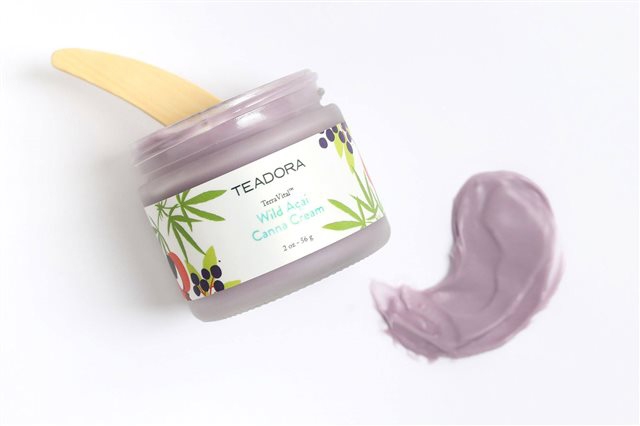
Wild Superfood Miracle Shampoo: If your hair is particularly frizzy and temperamental now, this shampoo will tame and calm it. Just a little goes a long way, and it’s gentle enough for daily use.
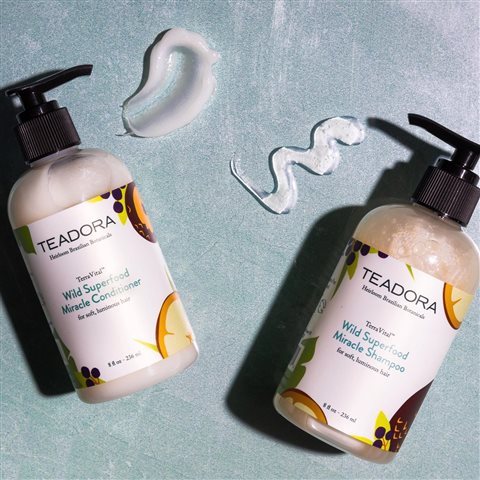
Gennev founder, CEO, and current Night Sweats Champion Jill Angelo always runs hot (and not just when she’s running). She wears the Birkenstock Arizona sandal pretty much all the time at home. They keep her feet cool and help her be all-over comfortable.
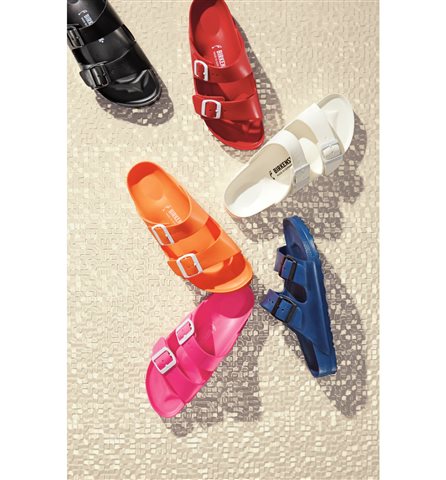
Exercise is the gift that keeps on giving in menopause: it helps with bone health, retaining muscle, managing weight, and protecting your brain, heart, and emotions. But let’s face it, as the days get shorter, darker, and colder, getting out for a run or to the gym is tough. We love the Excy for exactly all those reasons “ you get a full-body workout in the comfort of your own home.
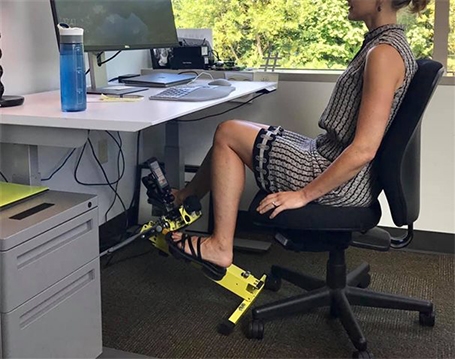
Menopause symptom relief gifts
Gennev
We are the source for menopause relief, and two of our favorites are Gennev Magnesium Glycinate for sleep and joint pain (and many women report anxiety relief), and our new Black Cohosh for help with hot flashes and night sweats.
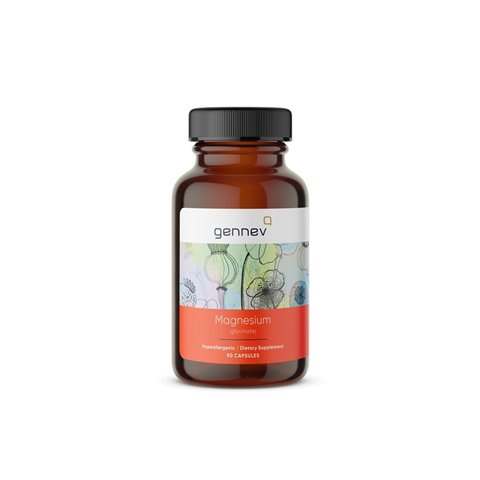
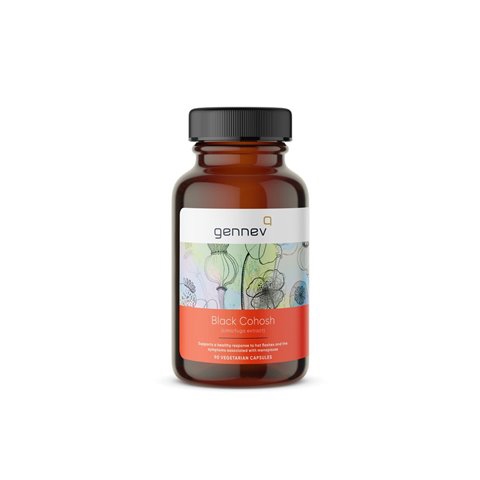
Hush
We love the Iced Hush weighted blanket. Weighted blankets are great for easing the insomnia and anxiety that can plague women in midlife, but who wants more blankets when they’re having hot flashes? Hush has one designed to keep you cool, despite the extra weight.
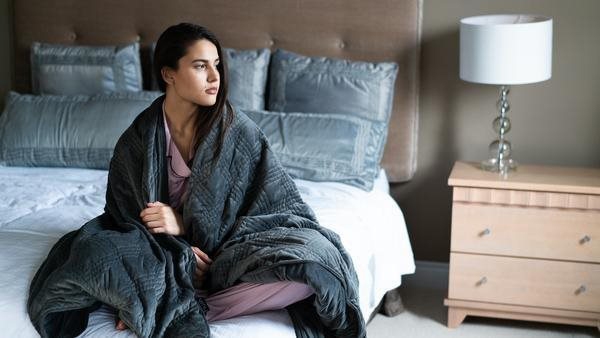
Embr
The Embr Wave is the cutting edge of “FemTech” as a very attractive bracelet that will help you regulate body temperature. Too cool? Hit the button from a warm-up. Feeling a hot flash starting? Nip it in the bud.

Great reads for women in menopause
Darcy Steinke’s Flash Count Diary is a fantastic read about one woman’s journey into understanding menopause and her own identity in this second half of life. We dare you not to tear up in the whale section.

She may be a neuroscientist, but she’s also an amazing author. We recommended Dr. Lisa Mosconi’s book Brain Food last year; this year it’s The XX Brain: The Groundbreaking Science Empowering Women to Maximize Cognitive Health and Prevent Alzheimer’s Disease. She is making the claim that what we eat has huge effects on our brain health, and it’s an empowering, positive read.
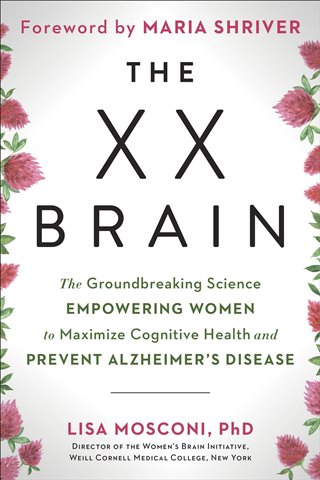
No, eating sugar won’t give you a yeast infection. Dr. Jen Gunter’s The Vagina Bible clears up so many misconceptions we have about our intimate bits and promotes a truly healthy approach towards women’s bodies and female sexual health.
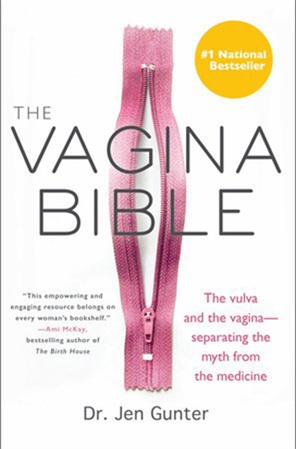
Pleasure
If you’re very close to a woman in midlife and menopause, Dr. Rebecca Dunsmoor-Su, Chief Medical Officer of Gennev, ob/gyn, and expert in women’s sexual health, recommends the Lelo SONA. This sonic clitoral massager may be, quite literally, just what the doctor ordered for a woman struggling with low libido and painful-sex issues. Great for solo play or with a partner, the SONA can help you find new ways of enjoying and expressing sexuality and pleasure.
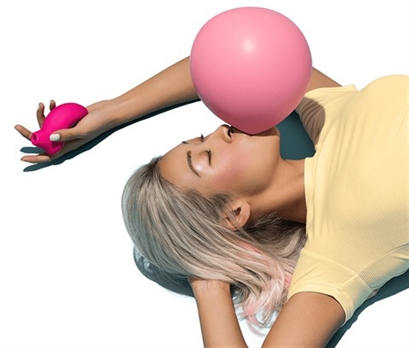
Nourishment
Food at its finest is a glorious balance of nutrition and pleasure. To help you get the most from your food, we turned to our Director of Health Coaching and Registered Dietitian, Lauren Leedy.
She suggests the Instant Pot pressure cooker for quick, easy weeknight meals or a subscription to a meal delivery service to take the guesswork out of meal planning and food prep.
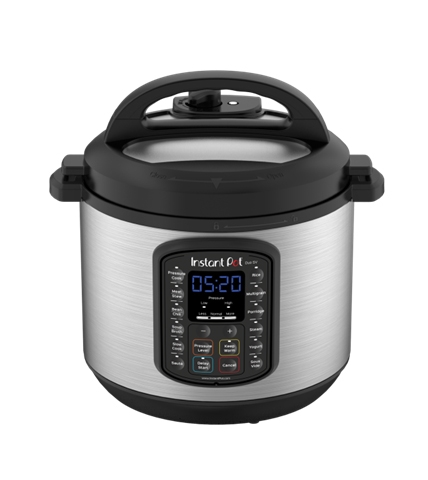
Says Lauren, “My top recommendation is Sun Basket for cooking kits and Thistle for fully prepared meals.”

What are you hoping to find under the tree this holiday season? Share your awesome gift ideas with the Gennev community in our forums!
*Note: Gennev has affiliate relationships with some of the retailers on this list and receives compensation at sale.